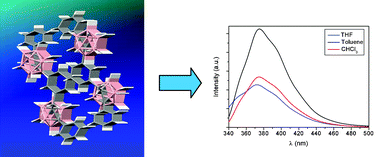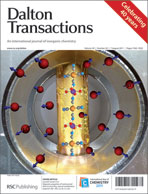A new family of photoluminescent neutral and anionic di-carboranyl and tetra-carboranyl derivatives have been synthesized and characterized. The reaction of α,α′-bis(3,5-bis(bromomethyl)phenoxy-m-xylene with 4 equiv. of the monolithium salt of 1-Ph-1,2-C2B10H11 or 1-Me-1,2-C2B10H11 gives the neutral tetracarboranyl-functionalized aryl ether derivatives closo-1 and closo-2, respectively. The addition of the monolithium salt of 1-Ph-1,2-closo-C2B10H11 to α,α,′-dibromo-m-xylene or 2,6-dibromomethyl-pyridine gives the corresponding di-carboranyl derivatives closo-3 and closo-4. These compounds, which contain four or two closoclusters, were degraded using the classical method, KOH in EtOH, affording the corresponding nido species, which were isolated as potassium or tetramethylammonium salts. All the compounds were characterized by IR, 1H, 11B and 13C NMR spectroscopy, and the crystal structure of closo-3 was analysed by X-ray diffraction. The carboranyl fragments are bonded through CH2 units to different organic moieties, and their influence on the photoluminescent properties of the final molecules has been studied. All the closo- and nido-carborane derivatives exhibit a blue emission under ultraviolet excitation at room temperature in different solvents. The fluorescence properties of these closo and nido-derivatives depend on the substituent (Ph or Me) bonded to the Ccluster, the solvent polarity, and the organic unit bearing the carborane clusters (benzene or pyridine). In the case of nido-derivatives, an important effect of the cation is also observed.


 Please wait while we load your content...
Please wait while we load your content...